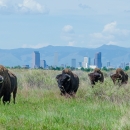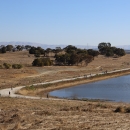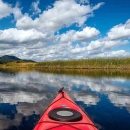Read the report on workshops with urban community representatives to understand barriers, motivations, and strategies for connecting urban audiences with refuges, wildlife, and the outdoors: Barriers and Strategies to Connecting Urban Audiences to Wildlife and Nature
Workshops with community leaders near seven urban refuges revealed how outdoor recreation opportunities benefit urban residents; the barriers to participate in the outdoors; and strategies for the U.S. Fish and Wildlife Service to better connect and engage urban residents. Common themes heard include:
Here’s some of what we’ve heard from conversations with residents in urban areas across the country…
What barriers prevent greater access or enjoyment of outdoor recreation opportunities by urban communities?
- Feelings of otherness for minorities: uncomfortable being the only minority in the outdoors and not being represented in the cultural and historical dialogue about America’s natural landscapes and conservation
- Fear for safety, health, and discomfort in the outdoors
- Negative cultural stigmas about working outdoors
“I told my grandmother I was going to be a wildlife biologist and work outdoors. She said, ‘No, no, we worked too hard for you to be outdoors.’ People equate working in an office with upper-level positions. There is still thinking like that among Latinos. It’s a very real barrier... My husband’s dad didn’t think he had a real career because he was outside teaching kids to fish.” (statement from a community workshop participant)
What can be done to promote greater participation in outdoor recreation and use of refuges by urban communities?
- We can’t just say “come visit the refuge.” Residents that fear the outdoors need more support when being introduced to nature and partnering with trusted community organizations is a good way to provide that support.
- Urban protected areas are themselves a great strategy for introducing people to nature because they are less removed from the city and therefore less intimidating for some people – we should promote them and make them more accessible!
- Enhance youth volunteer recruitment so youth can learn about career opportunities in natural resources management and gain valuable work experience. By focusing on career opportunities, refuges can play a role in developing “conservation leaders” for the next generation.
















